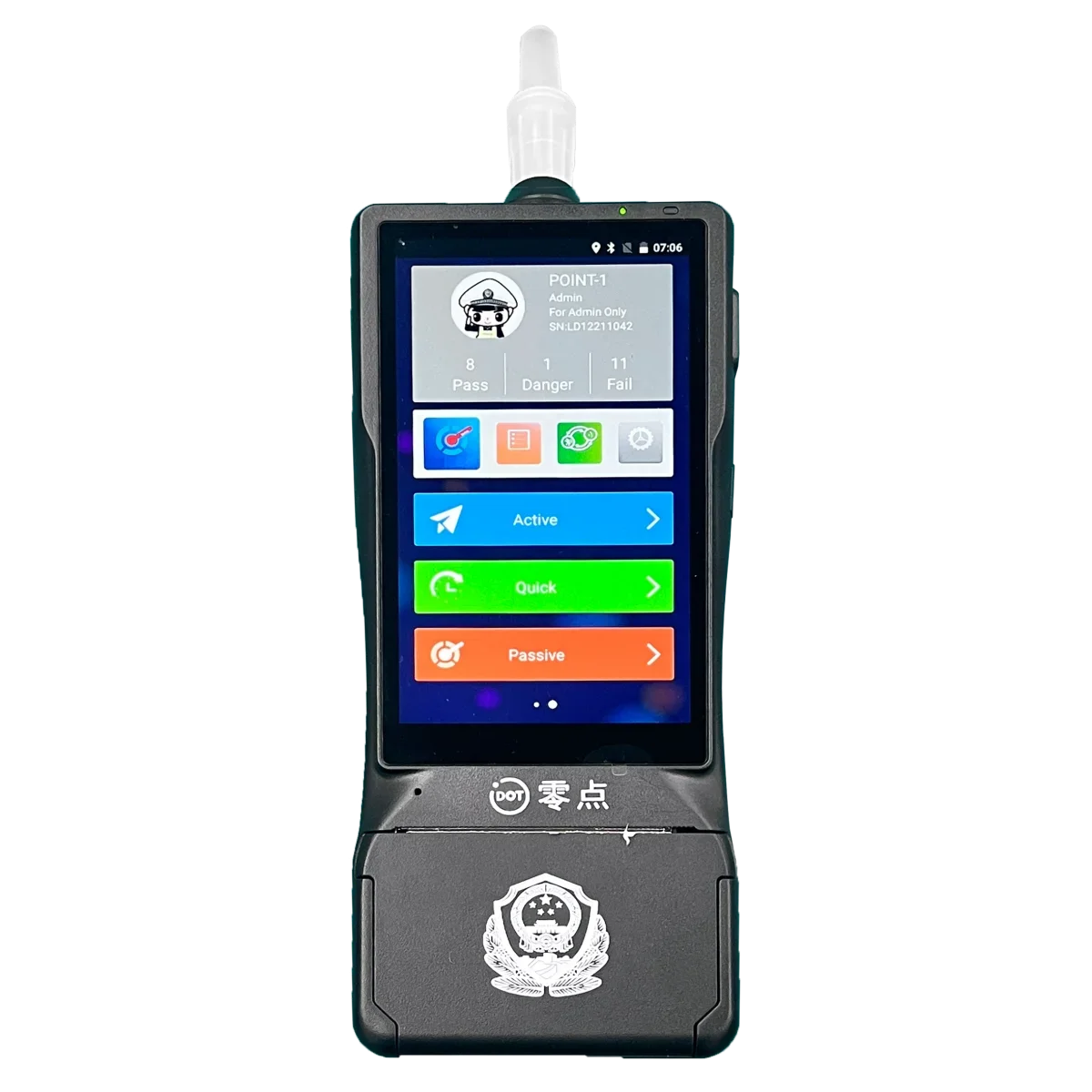What types of alcohol testers are there?
4 min readA breathalyser is a device used to measure alcohol concentration in a person. It is widely used in many settings, including traffic safety, workplace safety and law enforcement. There are many classifications and types of alcohol testers, and each type has its own unique advantages and applicable scenarios. This article will provide a detailed introduction to the classification and types of alcohol testers.
First of all, according to different working principles, alcohol testers can be divided into two major categories: breath alcohol testers and oral alcohol testers.
Breathalyzers are the most common type of alcohol tester. It determines the alcohol content by measuring the alcohol concentration in the breath of the person being tested. Breathalyzers typically use electrochemical or infrared sensors to detect alcohol concentration. An electrochemical sensor is a chemical reaction-based sensor that determines alcohol concentration by measuring redox reactions. Infrared sensors use the absorption characteristics of alcohol molecules to infrared rays to measure alcohol concentration. The advantages of the breath tester are easy to use, fast testing speed, and high accuracy. However, it also has some limitations, such as the need for regular calibration and replacement of sensors, and the possibility of being disturbed by the external environment during use.
Oral testers are a relatively new type of alcohol tester. It determines the alcohol content by testing the alcohol concentration in the test subject's mouth. Oral testers typically use chemical or electrochemical sensors to detect alcohol concentration. A chemical sensor is a chemical reaction-based sensor that determines alcohol concentration by measuring the color change of a chemical reaction. Electrochemical sensors use electrochemical reactions to measure alcohol concentration. The advantages of oral testers are that they are easy to use, non-invasive, and can provide accurate test results in a short time. However, oral testers also have some limitations, such as the need to regularly replace the sensor and the possibility of interference from other substances in the mouth during the test.

Secondly, according to different usage scenarios, alcohol testers can be divided into portable alcohol testers and fixed alcohol testers.
Portable testers are the most common type of alcohol tester. It is usually small and lightweight, making it easy to carry and use. Portable testers are suitable for situations that require frequent movement and testing, such as traffic safety inspections and safety inspections in entertainment venues such as bars and nightclubs. Portable testers typically feature fast response, high accuracy, and simple operation.
A fixed tester is an alcohol tester installed in a fixed location. It is usually installed at traffic intersections, factory entrances, bar entrances, etc. for long-term monitoring and control of alcohol concentration. Fixed testers typically offer high accuracy, stability, and reliability. They often need to be integrated with other devices or systems, such as surveillance cameras, automatic access control systems, etc.
Finally, according to the different display methods of test results, alcohol testers can be divided into digital display types and warning light display types.
Digital display breathalyzers are the most common type. It displays test results via a digital display, such as a numerical value for alcohol concentration or a percentage of alcohol content. Digital display alcohol testers are usually highly readable and intuitive, making it easy for users to understand and judge.
Warning light display alcohol testers are a relatively new display method. It displays test results through warning lights of different colors, such as green indicating normal alcohol concentration, yellow indicating higher alcohol concentration, red indicating alcohol concentration exceeding the legal limit, etc. Warning light display type alcohol testers usually have high visibility and warning effects, making it easier for users to quickly judge the test results.
To sum up, there are various classifications and types of alcohol testers, and each type has its own unique advantages and applicable scenarios. Understanding the different types of breathalyzers can help you choose the right device for your needs and use them correctly to ensure traffic safety, workplace safety and effective enforcement of laws.
As an alcohol tester supplier, we sell various types of alcohol testing instruments and equipment. Our products feature high precision, strong reliability, and easy operation, and are suitable for various occasions, such as drunk driving investigations, workplace safety management, personal health monitoring, etc. Whether you are an individual user or a commercial establishment, we can provide the most appropriate alcohol testing solution to ensure your safety and compliance needs are met.
The important role of alcohol testers in traffic safety
A guide to the precautions for using the alcohol tester
How to choose a suitable alcohol tester
How to choose a quality alcohol tester supplier
Explore the many factors that affect the accuracy of alcohol testers
Data recording and analysis functions of alcohol tester
How to maintain and care for alcohol tester
Are alcohol testers expensive?
Is the alcohol tester accurate?
mia
gotaiwu@gmail.com

